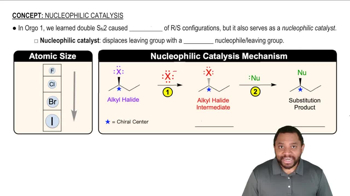Textbook Question
When a ketone is dissolved in 18O-labeled water, the 18O label is incorporated into the ketone. Suggest a mechanism that explains this observation.

 Verified step by step guidance
Verified step by step guidance


 8:27m
8:27mMaster Nucleophilic Addition with a bite sized video explanation from Johnny
Start learning